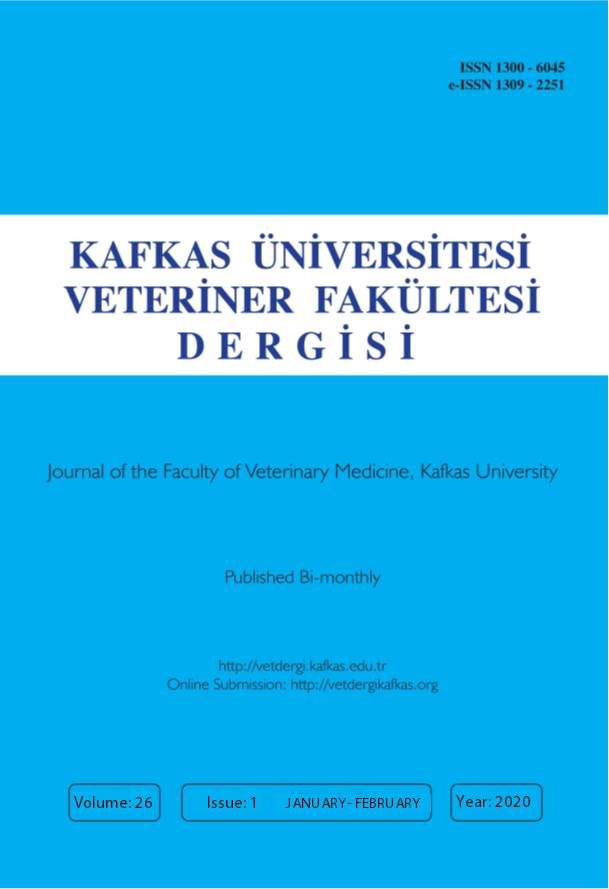
This journal is licensed under a Creative Commons Attribution-NonCommercial 4.0 International License
Kafkas Üniversitesi Veteriner Fakültesi Dergisi
2020 , Vol 26 , Issue 1
Expression of Follicle-stimulating Hormone, Luteotropic Hormone, Estrogen and Progesterone Receptors in Ovary, Oviduct and Endometrium After Estrus Induction in Ewe
1Department of Animal Science, College of Life Sciences and Food Engineering, Hebei University of Engineering, Handan 056021, CHINA2College of Animal Science and Technology, Hebei Agricultural University, Baoding 071000, CHINA
3Hebei Institute of Animal Science and Veterinary Medicine, Baoding 071000, CHINA
4Huaxing Pet Food Company Limited, Xingtai 054400, CHINA DOI : 10.9775/kvfd.2019.22274 Induction of estrus is an effective management tool for increasing the pregnancy rate in ewes, and there is a long estrus interval after lambing in spring in Small-tail Han ewe. In this study, norgestrel releasing intra-vaginal devices (PRID) and PRID + pregnant mare serum gonadotrophin (PMSG) were used for estrus induction in Small-tail Han ewe, and expression of follicle-stimulating hormone receptor (FSHR), luteinizing hormone receptor (LHR), estrogen receptor (ER) and progesterone receptor (PGR) mRNA in the ovarial stroma, oviduct ampulla and endometrium was analyzed by quantitative real-time PCR. The results showed that the estrus-induction with PRID and PRID + PMSG almost had the same effects on increasing the percentage of animals in estrus and conception rate of the ewes, and the estrus-induction had no significant effect on the expression of LHR, ER and PGR mRNA in the oviduct ampulla, ovarial stroma and endometrium, and FSHR in the ovarial stroma and endometrium. Furthermore, the estrus-induction could significantly decrease the expression of FSHR mRNA in the ovine oviduct ampulla (P<0.05). Therefore, it was suggested that down-regulation of FSHR in the oviduct ampulla after estrus induction may be helpful for fertilization and early embryo development. Keywords : Ewe, Endometrium, Estrus induction, Ovarial stroma, Oviduct ampulla, Receptor










